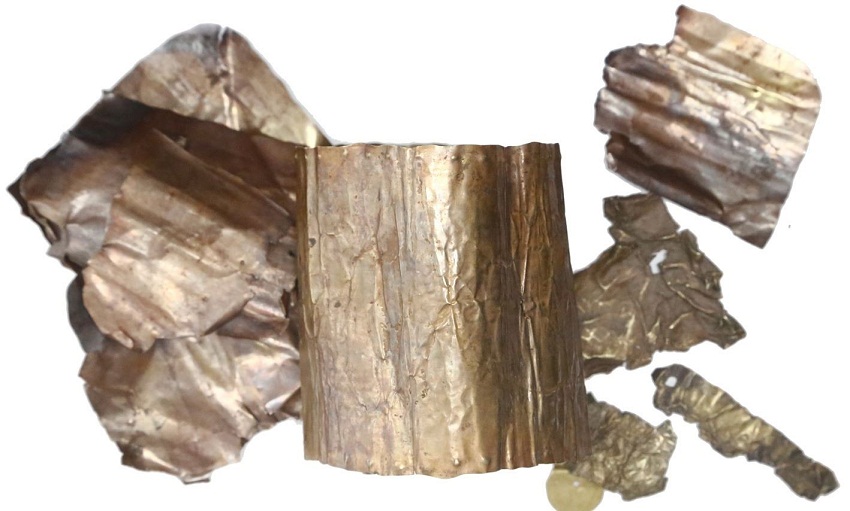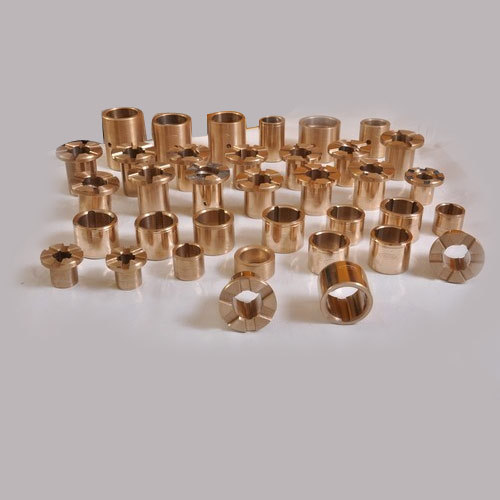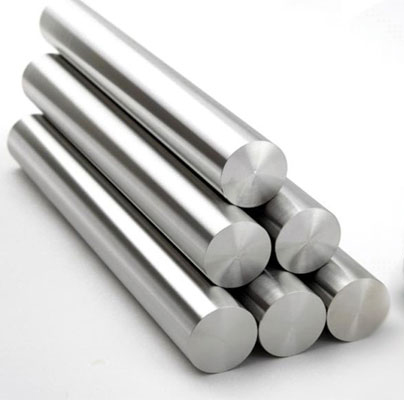Ferrosilicon
Ferrosilicon is a ferroalloy of silicon and iron. The ratio in which the two chemical substances are combined varies, with the proportion of silicon ranging anywhere between 15% and 90%. This alloy is also known by the name ferrosilicium.
Ferrosilicon Identification
CAS Number: 8049-17-0
Chemical Formula for Ferrosilicon
The chemical formula for Ferrosilicon is FeSi.
Ferrosilicon Production
Ferrosilicon can be produced by reducing sand or silica with coke and reacting it with iron derived from scraps or millscale. Ferrosilicons having 15% silicon content can be derived from blast furnaces using acid fire bricks.
Another method of obtaining this alloy is to use a submerged electric arc furnace for melting quartz, steel scrap together with a reductant. The hot liquid alloy is then collected in a sandbed, cooled and broken into small pieces. These small pieces are crushed further to obtain the required size. Large quantities of silica are required for preventing silicon carbide formation. Microsilica is an important byproduct obtained from this reaction.
Ferrosilicons of varying silicon content are found in the worldwide market. Ferrosilicons having a proportion of 15%, 45%, 75%, and 90% silicon can be found; the rest is comprised of iron. Other constituents like calcium and aluminum have a presence of around 2%.
Ferrosilicon Chemical and Physical Properties
The physical and chemical properties of Ferrosilicon are listed below:
Molecular Weight: The molecular weight for this alloy is 28.0855 g/mol.
Melting Point: The melting point of this substance varies with the content of silicon. FeSi 45 contains 45% silicon and its melting point ranges between 1215°C and 1300°C. FeSi 75 contains 75% silicon and its melting point ranges between 1210°C and 1315°C. FeSi 90 contains 90% silicon and its melting point ranges between 1210°C and 1380°C.
Boiling Point: The boiling point for this substance is 2355°C.
Density: The density of Ferrosilicon is different for different ratios of alloy compositions. FeSi 45 has a density of 5.1 g/cm3. The density of FeSi 75 is 2.8 g/cm3 and FeSi 90 has a density of 2.4 g/cm3.
Appearance: The shape of ferrosilicon powder particles can be spherical or irregular, like lumps, crushed or milled.
Corrosivity: It is resistant to corrosiveness and abrasiveness.
Color: The color of Ferrosilicon varies between silvery grey and dark grey.
Odor: Odorless; can be dangerous when inhaled.
Solubility: Ferrosilicon may react with water to produce hydrogen.
Combustibility: The dust particles of Ferrosilicon are combustible.
Specific Gravity: Specific Gravity of ferrosilicon varies with the proportions in which the two chemical substances are mixed. For FeSi 75, the specific gravity is 3.01.
Ferrosilicon Uses
The various uses of this alloy are discussed below:
- Ferrosilicon is used in deoxidizing steel as well as other ferrous alloys. This helps to prevent loss of carbon from molten steel.
- This alloy is also used in the manufacturing of other ferroalloys.
- Ferrosilicon is extensively used in the metallurgical industry for the processes of atomization, casting, melting and heavy media separation reactions.
- The alloy is used as a basic raw material for inoculation, adjusting, suspending, mineral processing and in the melting rod industry. It is also used for deoxidization and coating in steel melting.
- Ferrosilicon is used as a source of pure silicon in the electric industry.
- It is used to manufacture silicon copper in the chemical industry.
- Ferrosilicon is used in the manufacturing of semiconductors.
- It is used for making silicon steel that are used in transformer cores and electromotors.
- Ferrosilicon is also sometimes used as a component in electrode coatings for arc welding.
- It is used as a source of silicon as well as to produce high-temperature resistant and corrosion-resistant ferrous silicon alloys.
- Magnesium ferrosilicon is used for modifying molten malleable iron. Ferrosilicon is used in the manufacturing of Magnesium ferrosilicon and other similar pre-alloys.
- Ferrosilicon is an important component in Pidgeon process. In this process, magnesium can be derived from dolomite.
Ferrosilicon MSDS
Ferrosilicon is a toxic, irritant and combustible substance. The alloy can be hazardous to human health. Toxic and flammable gases are produced when this alloy reacts with moisture, bases and acids. Hence adequate protection is needed from accidentally inhaling or ingesting the material.
While dealing with this alloy, care should be taken to protect the eyes and the skin. Ferrosilicon is a stable substance. However, under certain conditions this material can also catch fire. It is thus important to adhere to adequate protective measures while dealing with this substance. The probable dangers posed by Ferrosilicon and the protective measures one needs to follow are discussed below in details.
Health Hazards
Exposure to Ferrosilicon can cause the following health problems:
Skin: It can cause irritation to the skin.
Eyes: Contact with the eyes causes dryness.
Inhalation: Inhaling this chemical compound might result in coughing and irritation of the respiratory tract.
Ingestion: Accidental ingestion can cause irritation to the mouth and lead to dehydration of the mucous membranes.
Chronic Problems: Prolonged exposure for several years might lead to speech problems and difficulty in movement.
First Aid Measures
Eyes: In case of an eye exposure, the eyes should be washed with plenty of water for several minutes. A doctor should be consulted after that.
Skin: In case of a skin contact, the infected skin areas should be rinsed with water for several minutes; a dermatologist should be consulted immediately. The contaminated clothing should be removed immediately and the clothes and shoes should be washed properly before being reused.
Ingestion: In case of ingestion, the victim’s mouth should be rinsed properly with water and then proper medical treatment should be carried out.
Inhalation: The victim should be immediately removed to an area of fresh air. Artificial respiration and oxygen should be employed if needed. To ensure the victim’s safety, further medical help should be administered.
Ferrosilicon UN Number: 1408 (RG III Class 4.3)
Personal Protection
While dealing with Ferrosilicon, the following protective gear should be used:
- P2 filter respirators for respiratory protection from harmful particles.
- Safety goggles or protective eyewear approved by OSHA is required for the protection of eyes.
- Protective gloves and clothing is to be used to avoid skin exposure.
- Smoking, drinking or eating near the storage facilities is strictly prohibited as this can lead to fire hazards or accidental ingestion.
Accidental Release Measures
The wet spills should not be repacked in sealed containers. Spills should be disposed off in keeping with the local, state and federal regulations.
Fire Hazards
Ferrosilicon itself does not catch fire. However, under certain conditions the dust particles of Ferrosilicon can combust and explode. Hence spreading of dust needs to be prohibited. It is also important not to have any open flames near Ferrosilicon powder. While fire fighting, the containers should be cooled with running water even after the flames are out.
Handling of Ferrosilicon
The storage sections used for this substance should be provided with adequate ventilation and facilities for cleansing. Accumulation of dust should be avoided. The containers storing the chemical should be tightly closed.
Storage of Ferrosilicon
The containers storing the chemical should be tightly closed when they are not in use. They should be kept in a dry and well-ventilated area and kept away from incompatible materials. The chemical can be stored in the following mediums:
- Fiberboard containers
- Drums
- Pails
- Jars
- Bulk bags
Ferrosilicon is an important alloy with many uses both in the fields of metallurgy as well as in the industrial sphere.





Am happy this time you’ve elaborated the mineral well to me
Well explained
Is ferrosilicon valuable? Price per oz or lb??